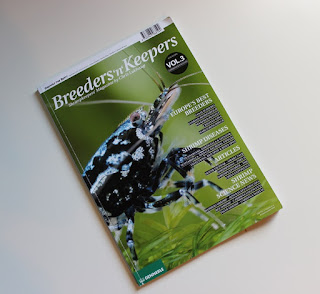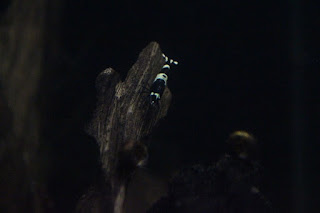With the reddish-brown or black and white drawings, they fall into a big group of fairly similar-coloured shrimp, both natural occurring and fancy breeds, but to me these Princess Bees have something special about them. They are lively and grows to around 25 mm. and not at all shy, which makes them more interesting to keep in my opinion.
I took them home and kept them in my normal tapwater. I knew this might be too alkaline for them, so I kept a close eye. They seemed to thrive. They got berried but no shrimplets were seen. After a few months I gave them 50% rainwater and soon I started to see shrimplets. What I learned from this is that they survive in quite wide range of water, but they need it soft to breed successfully.
In their natural habitat in Vietnam they are living in soft water too, so this not exactly a surprise.
More shrimplets on the way...
This shrimp is a slow breeder; since I got the water right, they have gone from 10 adults to 26. I have no count on shrimplets, but there are quite a few. In any case, I am very happy to have found the key to breeding this beauty.
Small-size...
...medium...
The tank is set up quite simple; 30 litres, sand substrate, a lot of small pieces of bogwood and a big Anubias. A handfull of leaves (Oak, Cattappa) and some Corydoras for company, filtered with HMF driven by air.































































